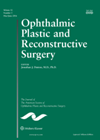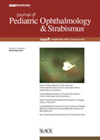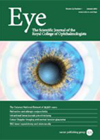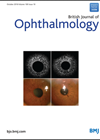Spontaneous resolution of inferior oblique over action
The purpose of this study was to evaluate the course of over-elevation in adduction in patients who had surgery for esotropia. Following a chart review, 28 patients met the inclusion criteria with a mean age of 53.5±53.7 months (12-252 months)....
Postoperative diplopia test with BT for inferior oblique overaction
The authors evaluate a novel assessment of botulinum toxin (BT) injection into the inferior oblique (IO) as a postoperative test in those with secondary IO overaction. This was a retrospective review of 23 injections for 18 patients using 1.25U of...
Single muscle surgery for hypertropia
The authors undertook partial tenotomies combined with graded marginal recession of single vertical rectus muscles to treat small angle hypertropia in four adults with fusion potential. They report dose response, surgical technique and outcomes. Dose response closely matched the theoretical...
Prediction of recurrence in exotropia
This study compares the long-term motor and sensory outcomes between constant and intermittent exotropia in infancy and investigated whether constancy can be used as a reliable factor for predicting surgical outcomes. Sixty-seven patients were reviewed – 37 constant and 30...
RCT of operative routes for congenital cataract surgery
The authors evaluated the performance of 25G vitrectomy systems in the management of congenital cataract in infants through two routes – anterior (transcorneal) and posterior (pars plana). This was a prospective randomised trial (RCT) of 24 eyes of 12 patients...
Orbital rhabdomyosarcoma treatment characteristics
The aim of this study was to review the clinical presentation, management, local and systemic outcomes of 14 orbital rhabdomyosarcoma (OR) cases with the focus on the role of surgery as treatment. The mean age at presentation was eight years...
An alternative to povidone-iodine for intravitreal injections?
While povidone-iodine (5% aqueous) preparations have historically been considered the most effective antimicrobial prophylaxis for ophthalmic procedures and have been adopted as routine for intravitreal injections, post-procedure pain is a commonly recognized adverse event of IVI and has typically been...
Licence to save: a UK survey of anti-VEGF use for the eye
This comment article highlights the controversy that exists in the choice for anti-VEGF drugs used for treatment of macular oedema and wet age-related macular degeneration (AMD). Two existing licensed drugs for macular oedema are ranibizumab (Lucentis) and aflibercept (Eylea). A...
RPE tears after intravitreal Lucentis
The current hypothesis regarding retinal pigment epithelium (RPE) tears is the contraction and fibrosis in choroidal neovascularisation (CNV) tissue after anti-VEGF therapy can induce rips in the overlying RPE. This South Korean study aimed to identify the association between RPE...
Intravitreal dexamethasone implant for recurrent CMO secondary to IGS
In this prospective study the authors present the data obtained on the efficacy and safety of the dexamethasone implant (0.7 mg) in the treatment of recurrent cystoid macular oedema (PCME) due to Irvine–Gass syndrome in patients with uncomplicated pseudophakia (off-label...
Long-term surgical outcomes after unilateral LR muscle recession
This a retrospective review of medical records from Korea between January 2003 and January 2012 in the Samsung Medical Centre. The long-term outcomes and risk factors for recurrence after unilateral lateral rectus (LR) recession (ULR) in children with small to...
Occurrence and risk factors for RD after PPV in acute postcataract bacterial endophthalmitis
This is a prospective multicentre study from France between March 2004 to December 2011 in four university hospitals; 123 consecutive patients treated with pars planar vitrectomy (PPV) were included in this cohort. The rate of retinal detachment (RD) of post-PPV...











